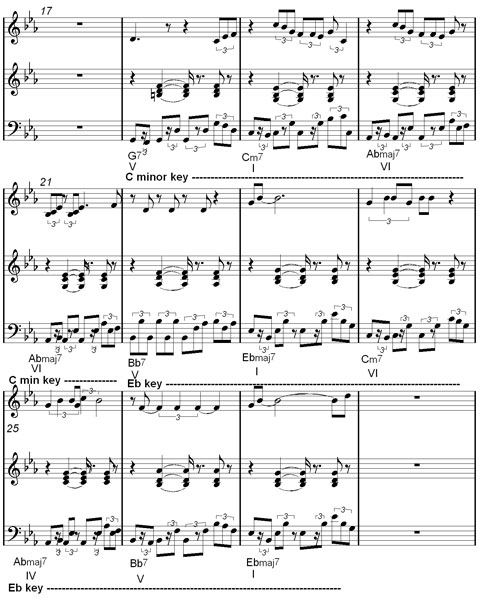by duaneshinn
What is music theory, and how can I benefit?
Here are just a few of the wonderful skills and insights a person benefits from by learning music theory:
How notation works -- a huge advantage in sight-reading.
The hierarchy of rhythm -- solving rhythm problems before they begin.
All kinds of scales -- the "ladders of notes" every song is composed of. Major scales, 3 types of minor scales, chromatic scales, whole tone scales, modal scales.
How transposition and modulation works -- playing songs in different keys, and getting from one key to another smoothly.
Complex time signatures, and what they tell you.
Perfect, major & minor intervals -- helps ear training greatly.
Two-part and four-part harmony.
Figured bass such as IV, V7, ii6, I6/4, etc. and how it relates to chord symbols such as Fm7, F6, Dmaj7, etc.
Harmonizing melodies with all these chords.
Open & close voicing, inversions, secondary chords, form, cadences, non-harmonic tones, arranging for voices, arranging for brass, arranging for strings, transposing instruments, key relationships and many other exciting insights into the inner workings of music!
But what is harmony?
Harmony is a sub-set of music theory. It is a series of notes in combination, played simultaneously. Listen to your favorite songs, and pay close attention to the back-up vocals when they're being sung along with the lead. Can you hear how the two vocal melodies differ in pitch? That's harmony, and it's highly possible that those back-up vocalists were chosen because of their strong ability to harmonize.
 Singing a harmony, or rather picking one out on your own without written sheet music, is an almost inherent musical skill that many singers would die to possess. But harmony isn't just the province of singers; it's found in every single area of music. Any time a sound is layered on top of another sound and those sounds match each other in rhythm and melody (but not pitch), a harmony is created.
Singing a harmony, or rather picking one out on your own without written sheet music, is an almost inherent musical skill that many singers would die to possess. But harmony isn't just the province of singers; it's found in every single area of music. Any time a sound is layered on top of another sound and those sounds match each other in rhythm and melody (but not pitch), a harmony is created.Harmony is made of intervals, and as such, it can be considered dissonant (scratchy, uncomfortable, like playing an E and an F at the same time) or consonant (pleasing or smooth). What makes a harmony pleasing or unpleasing, however, is extremely relative. In medieval times, only octaves and perfect fifths were considered harmonious, and any harmony that deviated from that was generally frowned upon. In modern western music, though, nearly everything is considered to be harmonious by someone. Fifths are still very popular in modern harmony but are now used in the most unlikely of places; heavy metal music, for example, frequently uses perfect fifths in the vocal harmony to create an eerie effect when layered on top of the more dissonant instrumentation.
Harmony, in addition to being consonant or dissonant, can also be subordinate or coordinate. Subordinate harmony, the tonal harmony used most frequently today, is a series of harmonies that are based on each other. The harmony moves in such a way that a resolution is somewhat predictable; you can hear this type of harmony in modern pop music, musical parts that flow very easily into each other and don't leave the listener baffled as to the turn the song has taken. On the other hand, coordinate harmony is a series of harmonies that operate independently of each other. They do have some common relation, of course, but don't typically move toward a goal, or predictable resolution. Renaissance musicians often used this type of harmony, and it's capable of producing rich and moving textures within a piece of music.
Learning music theory and harmony is not just an option you can take or leave: it is part and parcel of the "stuff of music". No surgeon would ever say "I don't want to learn all that stuff about the nervous system & the skeletal system and blood vessels and how the lungs and heart works and all that stuff -- I just want to operate".
And yet the majority of piano players ignore the very thing that would take them to the next level in their playing and knowledge -- music theory & harmony.
Source: http://www.articlecircle.com/ - Free Articles Directory
About the Author
For more information on music theory & harmony, please go to http://www.playpiano.com/Articles/32-musictheoryharmony.htm
No comments:
Post a Comment